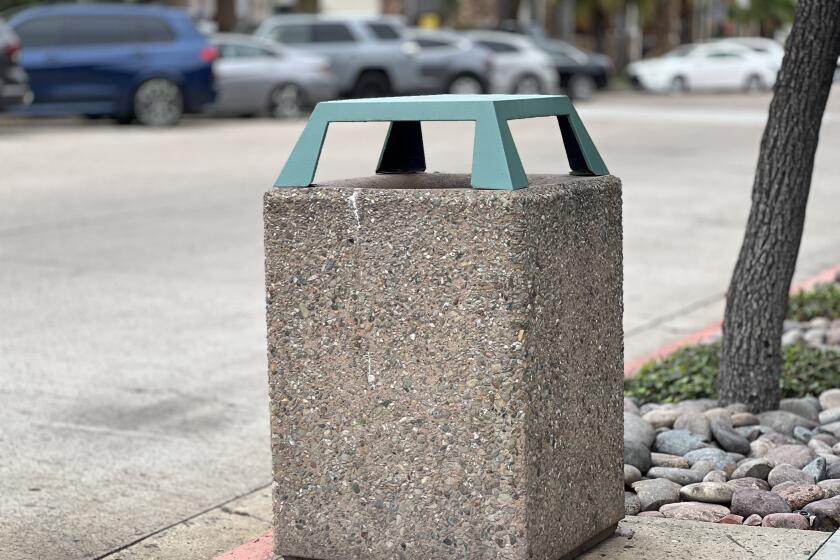A Word, Please: You’re free to peruse this commentary in every sense of the word

This week I learned that pretty much everyone who’s ever opined about the word “peruse” was wrong, kind of. And the people who corrected the people who opined wrongly were also wrong, kind of. And that I, myself, never quite understood the real deal with “peruse,” even though I thought I had it all figured out.
Here’s the most common way I see “peruse” used these days: “Peruse the charming boutiques.” “Peruse the delicious menu options.” “Peruse the aisles.” In other words, I see “peruse” used to mean “browse.”
Ten or 20 years ago, the only “peruses” I ever noticed referred to reading, not looking at merchandise. From here, the controversy heats up because there are different ways to read something. You can read something closely and carefully, you can skim it casually, or you can read it while paying just the normal amount of attention. And in the early 1900s, people started saying that only one of those is correct.
“Peruse should not be used when the simple ‘read’ is meant,” argued author Frank Vizetelly in the 1906 “A Desk-Book of Errors in English,” which is cited in Merriam-Webster’s
Dictionary of English Usage. “Peruse,” Vizetelly argued, means “to read with care and attention … to examine with critical care and in detail.”
The idea caught on, and within a few decades this rule was standard in prescriptivist handbooks of English like Eric Partridge’s influential 1942 guide “Usage and Abusage.” “Peruse is not synonymous with ‘to read,’ for it means to read thoroughly, read carefully from beginning to end,” Partridge wrote. “One peruses a contract, one reads an (ordinary) advertisement.”
The idea stuck, and to this day anyone who uses “peruse” to mean “skim” or “read” can draw sneers from adherents of this long-held belief.
Ending a sentence or clause with a preposition is nothing to be afraid of, writes grammar expert June Casagrande.
Strangely, though, it seems Vizetelly based this rule on nothing but his own beliefs. “While we cannot be sure, it appears that this notion of the correct use of ‘peruse’ was Vizetelly’s own invention,” Merriam’s explains. “It was certainly born in disregard of dictionary definitions of the word and in apparent ignorance of the literary traditions on which those dictionary definitions were based.”
What “literary traditions” might those be? Plenty. Notably, lots and lots of passages from Shakespeare, who used “peruse” to mean “read” all the time. A few examples cited in Merriam’s: “I have perused the note” (“The Taming of the Shrew”). “Peruse this writing here, and thou shalt know the treason that my haste forbids me to show” (“Richard II”). “Both they and we, perusing o’er these notes, may know wherefore we took the sacrament” (“King John”). William Wordsworth, Jane Austen, Benjamin Franklin and Jonathan Swift also used “peruse” in the more liberal sense, according to Merriam’s.
So when Vizetelly laid down his rule, he was saying, “Do as I say, not as revered writers have done for centuries.” And people listened.
How, then, should modern English speakers use “peruse”? Merriam-Webster’s Collegiate Dictionary (not the same as the usage guide cited above) lists the stricter definition first: “to examine or consider with attention and in detail, study.” But its secondary definition “to look over or through in a casual or cursory manner” can mean to skim a written passage. It can even mean to look at things other than text, like items on shelves in a boutique. So even the loosest usage of “peruse” is acceptable. The dictionary’s final definition, “to read,” allows for careful or hasty reading. Both are fine.
“Yes; one of our definitions for ‘peruse’ is ‘to skim,’” the dictionary explains in a usage note. “However, you should be aware that another of our definitions for this word is ‘to read something in detail.’ Some usage guides feel that the ‘read carefully’ sense is correct and that the ‘skim’ sense is not. Both have been in widespread use for some four hundred years.”
June Casagrande is the author of “The Joy of Syntax: A Simple Guide to All the Grammar You Know You Should Know.” She can be reached at [email protected].
All the latest on Orange County from Orange County.
Get our free TimesOC newsletter.
You may occasionally receive promotional content from the Daily Pilot.




